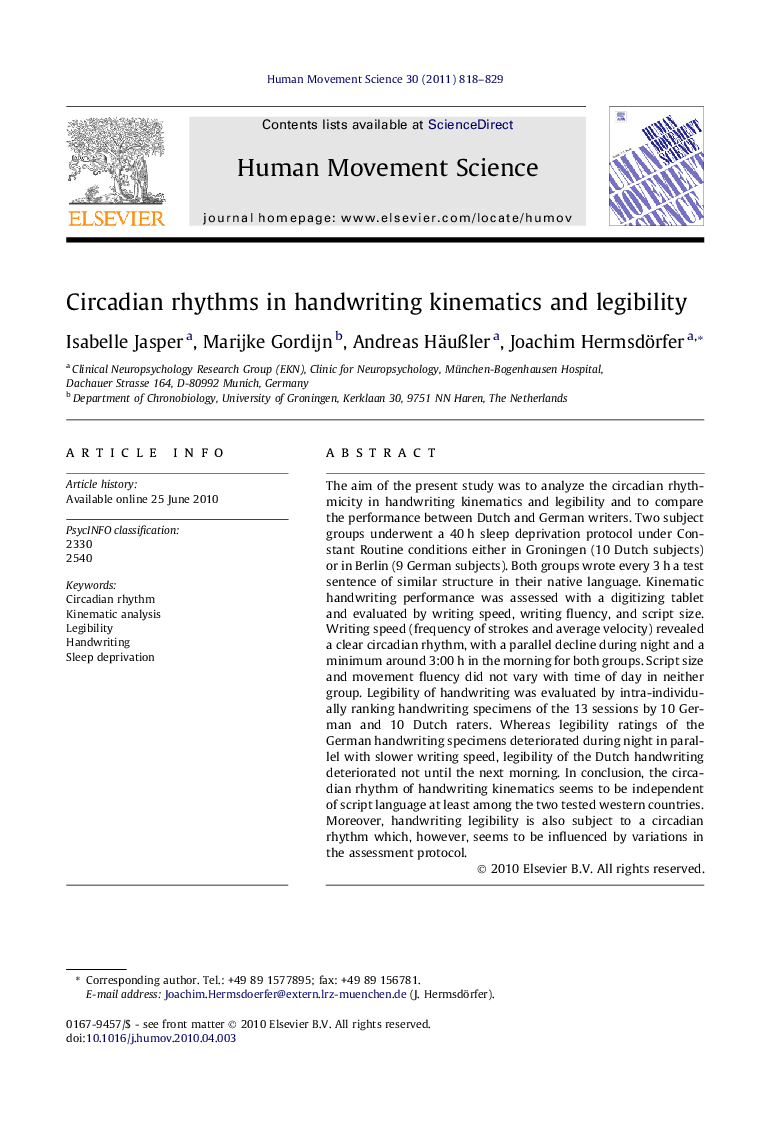| Article ID | Journal | Published Year | Pages | File Type |
|---|---|---|---|---|
| 928579 | Human Movement Science | 2011 | 12 Pages |
The aim of the present study was to analyze the circadian rhythmicity in handwriting kinematics and legibility and to compare the performance between Dutch and German writers. Two subject groups underwent a 40 h sleep deprivation protocol under Constant Routine conditions either in Groningen (10 Dutch subjects) or in Berlin (9 German subjects). Both groups wrote every 3 h a test sentence of similar structure in their native language. Kinematic handwriting performance was assessed with a digitizing tablet and evaluated by writing speed, writing fluency, and script size. Writing speed (frequency of strokes and average velocity) revealed a clear circadian rhythm, with a parallel decline during night and a minimum around 3:00 h in the morning for both groups. Script size and movement fluency did not vary with time of day in neither group. Legibility of handwriting was evaluated by intra-individually ranking handwriting specimens of the 13 sessions by 10 German and 10 Dutch raters. Whereas legibility ratings of the German handwriting specimens deteriorated during night in parallel with slower writing speed, legibility of the Dutch handwriting deteriorated not until the next morning. In conclusion, the circadian rhythm of handwriting kinematics seems to be independent of script language at least among the two tested western countries. Moreover, handwriting legibility is also subject to a circadian rhythm which, however, seems to be influenced by variations in the assessment protocol.
